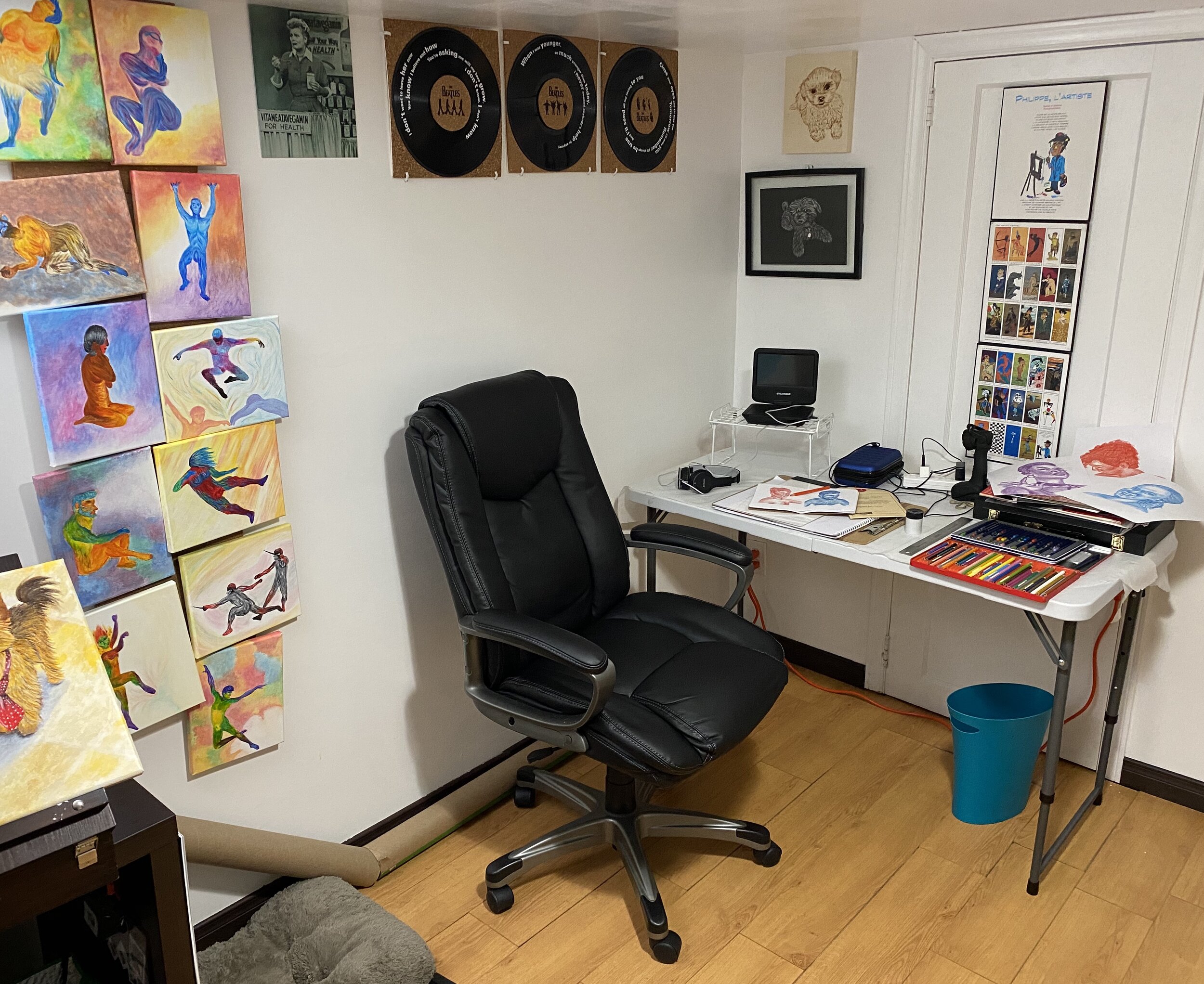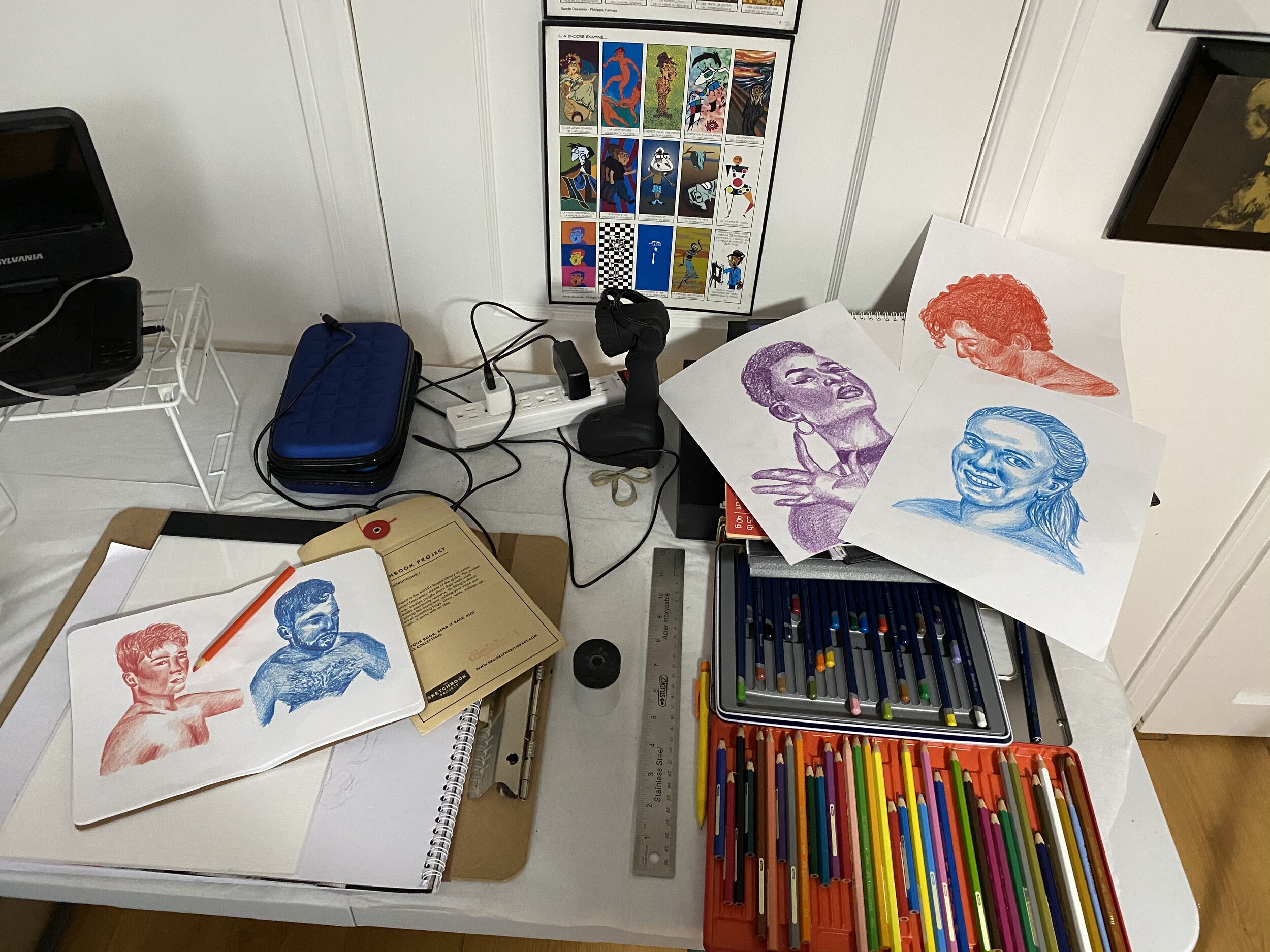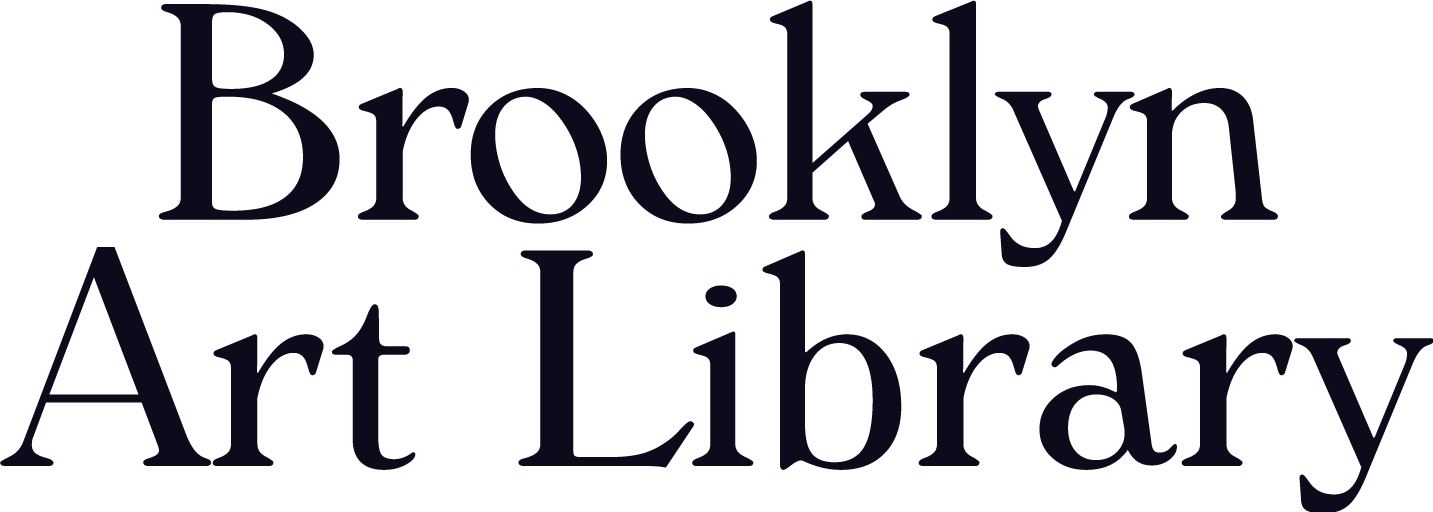14 Day Portrait Challenge: Cesar Vianna
Cesar Vianna is an illustrator and graphic designer based in Rouyn-Noranda in Quebec. An avid sketcher and a master of experimenting with digital and physical mediums, Vianna has dabbled in painting, photography, and motion design as well, and always finds a way to turn his expressive illustrative style into tools for storytelling. Along with projects related to information visualization, postcards, and public health among others, his work has been exhibited throughout Canada, including the 10e Internationale D'art RN Miniature, at the Musee D’Art De Rouyn-Noranda, and was a finalist for the Éditions Alto Book Cover Competition in 2016. A participant in the Sketchbook Project’s Volume 16 with a sketchbook titled “The Plausible Impossible,” you can see all of Cesar’s images from the 14 Day Portrait Challenge on his website and you can keep up with his newest projects on his Instagram.
When did you begin making art?
My oldest memories are from my childhood, with me watching cartoons, like The Flintstones, The Jetsons, and I was doing sketches of the characters. I always loved cartoons and comics, at the beginning they inspired me a lot to do my sketches. Later, when I discovered art history, I developed a third passion. I always wanted and dreamed to have my artwork appreciated like the great masters.
Why did you decide to do the 14 Day Portrait Challenge?
When the pandemic arrived, I decided to do something useful with my free time at my home. I had Volume 16 of the Sketchbook Project to finish and I was also working on the Infinite Sketch project. But everything I was doing at that time was inside my comfort zone. So, I received the email with the 14 Day Portrait Challenge. I thought that it could be great to do something I could not control (for example, the person’s choice and the art supply). It was a great experience. I was impressed and, at the end of it, I participated in the 28 Day Challenge and the 7 Day Heroes Challenge.
What were some of your favorite pieces to come out of this experience? Or the most challenging (or both)?
My favorite one is Frida Kahlo’s portrait. Usually, I don’t like to work with watercolor because of the pigment, but I had a great result in that one. I tried to do a portrait of her, inspired by the way she represented herself, and I think I did it great. The colors I used were vibrant. I love that one! The most challenging piece was the Martha Stewart one (page 103). I don’t like to work with collage at all and, to work with fabrics, it was something unthinkable for me.


How has quarantine impacted your creativity?
The quarantine had a great impact on me as an artist. When it started, I had time to explore my art, to start some old projects (and new ones). I could not have imagined at that period I would have two artworks published, I would be invited to join the International Association of Visual Arts (IAVA), I would win a sketch contest in my town, and I would have some exposition projects as consequence. Also, because of all the challenges that I participated, I tried and I learned to do and to use new things. For example: to use tea to do an artwork, it was incredible! For me, as an artist, it was a great moment, it was a period that I used to invest in myself and in my creativity.
What does your workspace look like now?
I was obliged to buy a second work table. Also I have lots of new materials that I’m experimenting with.


What are some of your favorite materials to work with at the moment?
At this particular moment of my life, I’m loving to work with watercolor pencils, pastel pencils and wood-burning tools.
You’ve been posting more portraits on your Instagram, in pencil, paint, and many other mediums. What role does sketching play in your creative practice?
This is the moment that I turn off from all my stress and from all my obligations and I just exercise my creativity. This moment (when I’m sketching), I am in a world of my own, inside my universe. It’s ‘me time.’
You work as a graphic designer and illustrator. When did you realize that you could pursue making art as a career?
When I was 12 years old, I read an article about illustrators’ work. At that moment, I realized that I could think about this for my whole life. At 15 years old, I started to buy “how to draw” books and other kinds of guidebooks to develop my techniques and to learn new things. It was at the beginning of the 90s, there was no Internet, so I had to find new ways to improve my learning. When I was at University, I studied to be a designer and I did several hours of art history and art classes. I never had a doubt about it. Today I have a ‘double life’: the first life as a graphic designer (when I respond to a client’s needs and there are lots of moments when I can’t do what I would like to do because of my client’s choices); and the second life as an artist (I make all choices, I do what I want, and I only have to answer to my creativity).
Do you have any advice for those wanting to pursue a similar path, or anyone looking to develop their unique illustrative style?
Do a lot of research (art books, web sites, artist social media’s pages). Look at what people did or what people are doing. Choose what challenges and inspires you and do it (not to copy, but as the way that you want to do it without fear of being judged or any obligation).
What gets you through creative blocks?
I love to watch cartoons, especially the old ones. The same that I used to watch when I was a child. It helps me a lot!
How can people support your work?
For the art to exist, it needs just one thing: a person to appreciate it. People don’t have to like it or buy it. It just needs to be seen to exist. So, I don’t ask people to give me money or to buy my artwork. My art needs to be seen to exist. Visit my website, or go to my Instagram pages.


